How Data Governance Drives Innovation in Data Science
Data governance forms the backbone of innovation in data science. It ensures that your data remains accurate, consistent, and trustworthy. High-quality data empowers you to make better decisions and reduces costly errors. According to Gartner, poor data quality costs organizations an average of $12.9 million annually. By implementing the right ingredients of data governance, you can unlock opportunities, foster collaboration, and build trust in your data. Companies prioritizing responsible governance outperform competitors by 400%, proving its value as a strategic asset for growth and innovation.
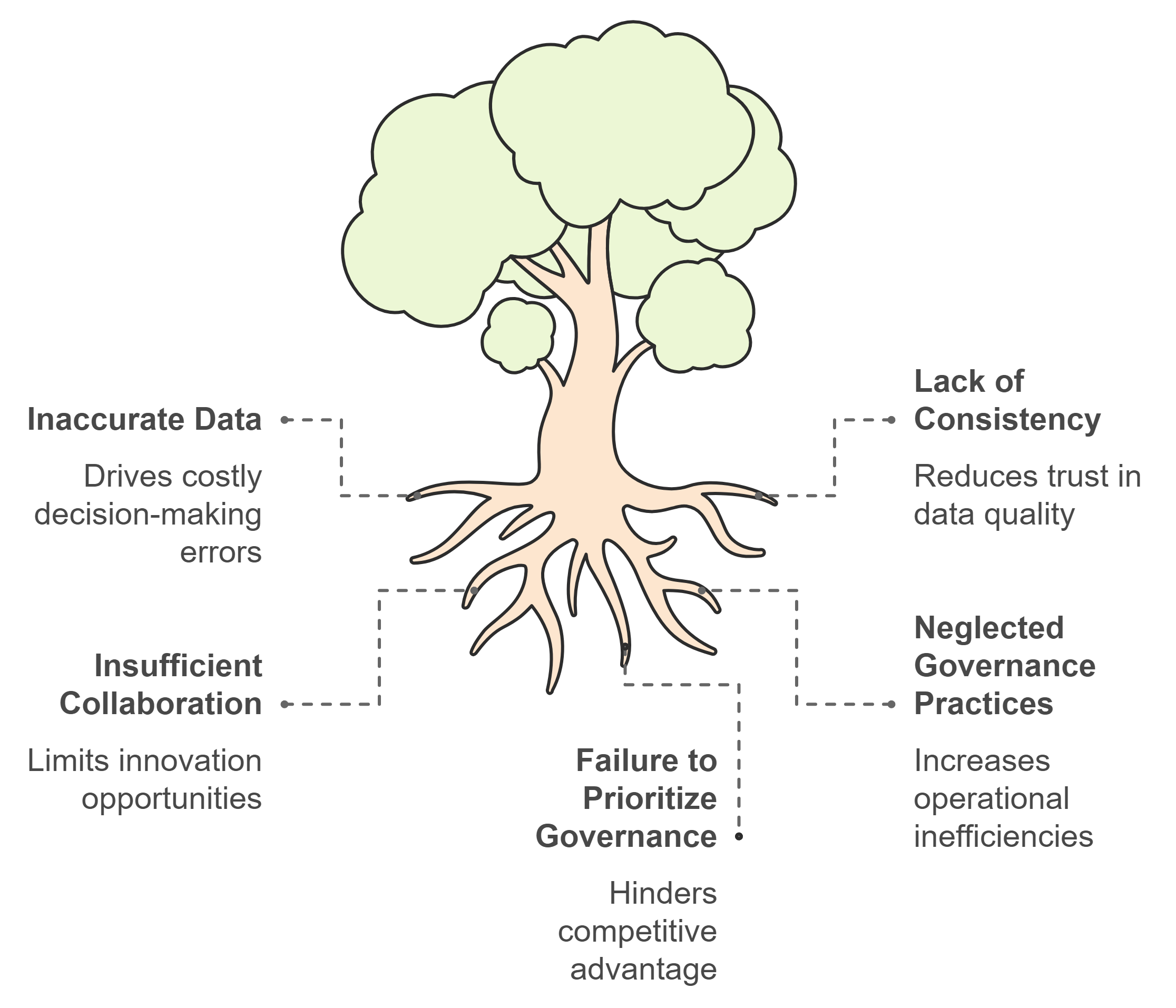
Key Takeaways
Data governance is essential for maintaining high-quality, accurate, and trustworthy data, which is crucial for effective decision-making and innovation.
Implementing adaptive governance allows organizations to balance control and creativity, fostering an environment where innovation can thrive without compromising data integrity.
Automated governance tools can streamline data management processes, enhance accuracy, and reduce manual efforts, enabling teams to focus on strategic initiatives.
Encouraging cross-team collaboration through unified data governance practices leads to better communication and more innovative solutions.
Building trust in data through transparency and regular audits empowers teams to make informed decisions and pursue innovative ideas confidently.
Aligning data governance with strategic business goals transforms governance from a compliance requirement into a catalyst for growth and innovation.
Investing in scalable and flexible technologies is crucial for adapting governance frameworks to the evolving data landscape and organizational needs.
Understanding Data Governance in the Context of Data Science
What Is Data Governance?
Data governance refers to a structured framework that ensures your data remains accurate, secure, and accessible throughout its lifecycle. It involves setting clear rules and standards for managing data effectively. By implementing this framework, you can maintain high data quality and prevent misuse. Organizations like Airbnb and Wells Fargo have successfully used data governance to manage vast amounts of information, ensuring reliability and usability.
At its core, data governance combines people, processes, and technology to create a culture where data is treated as a valuable asset. This approach not only safeguards your data but also enhances its potential for driving insights. In today’s data-driven world, prioritizing governance is essential for maintaining trust and achieving long-term success.
Why Data Governance Matters for Data Science
Data science thrives on high-quality data. Without governance, your data may become inconsistent, unreliable, or even inaccessible. Poor data quality can lead to flawed analytics, which directly impacts decision-making and innovation. According to Gartner, poor data quality costs organizations millions annually, highlighting the importance of governance.
Effective data governance ensures that your data is accurate and trustworthy. This reliability allows data scientists to focus on generating insights rather than fixing errors. It also fosters collaboration across teams by providing a unified view of data. When everyone works with the same reliable information, innovation becomes more achievable.
Moreover, governance plays a critical role in training AI models. High-quality data ensures that these models perform accurately, leading to better predictions and outcomes. By embedding governance into your data science practices, you can unlock the full potential of your analytics efforts.
Core Principles of Effective Data Governance
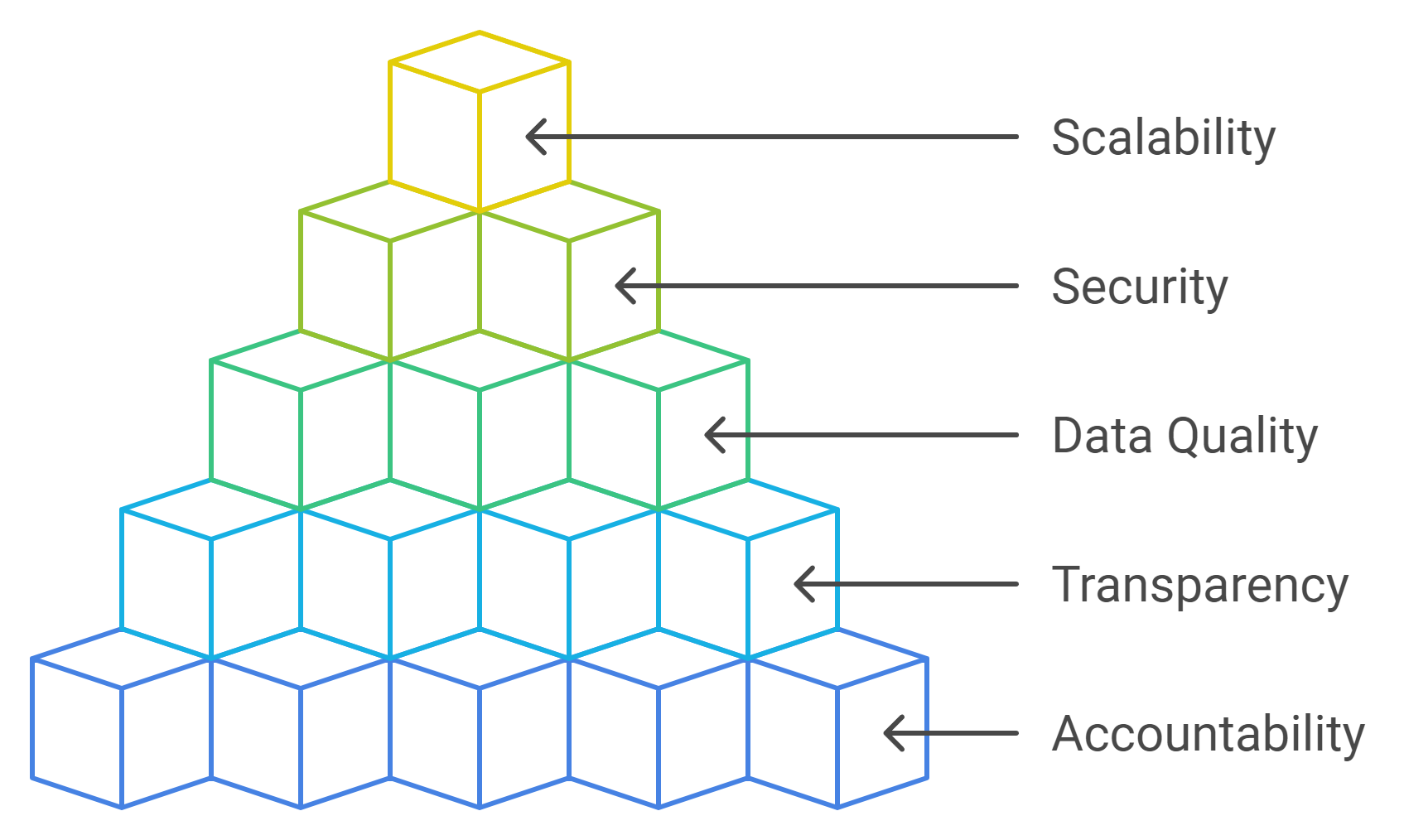
To implement successful data governance, you need to follow key principles:
Accountability: Assign clear roles and responsibilities for managing data. This ensures that everyone understands their part in maintaining data quality.
Transparency: Establish clear policies and make them accessible to all stakeholders. Transparency builds trust and encourages adherence to governance practices.
Data Quality: Focus on maintaining accuracy, consistency, and completeness. High-quality data forms the foundation for meaningful insights.
Security: Protect your data from unauthorized access and breaches. Robust security measures safeguard sensitive information and maintain trust.
Scalability: Design governance frameworks that adapt to your organization’s growth. Scalable systems ensure that governance remains effective as data volumes increase.
By adhering to these principles, you can create a governance framework that supports both compliance and innovation. This balance allows you to harness the power of data science while maintaining control over your data assets.
Challenges of Traditional Data Governance Approaches
Overemphasis on Compliance Over Innovation
Traditional data governance often prioritizes compliance with regulations over fostering innovation. While compliance is essential to avoid legal and financial risks, this approach can stifle creativity and limit your ability to derive value from data. Many organizations view governance as a checklist for meeting regulatory requirements rather than a tool for driving business growth. This mindset can lead to missed opportunities for leveraging data in innovative ways.
For example, a global retailer once struggled to extract meaningful insights from its data due to rigid governance practices focused solely on compliance. By shifting its strategy to involve senior executives in aligning governance with business objectives, the company unlocked new opportunities for innovation. This case highlights the importance of balancing compliance with a forward-thinking approach to governance.
To overcome this challenge, you should treat data governance as more than a compliance requirement. Align governance initiatives with your organization's strategic goals to transform it into a competitive advantage. This alignment enables you to generate precise insights and improve operational efficiency.
Inflexibility in Adapting to Rapid Changes
The fast-paced nature of today's business environment demands agility, but traditional data governance frameworks often lack the flexibility to adapt quickly. Rigid policies and outdated processes can hinder your ability to respond to emerging trends, new technologies, or shifting market demands. This inflexibility not only slows down decision-making but also limits your capacity to innovate.
Persistent challenges in global data governance, such as balancing privacy with innovation and staying updated on technological advancements, further complicate the situation. Organizations that fail to adapt risk falling behind competitors who embrace more dynamic governance strategies.
To address this issue, consider adopting adaptive governance practices. These practices balance control with creativity, allowing you to maintain data integrity while staying agile. By embracing flexibility, you can position your organization to thrive in a rapidly changing landscape.
Fragmented Data Management Practices
Fragmented data management is another common challenge in traditional governance approaches. When data is stored in silos across different departments or systems, it becomes difficult to ensure consistency, accuracy, and accessibility. This fragmentation can lead to inefficiencies, duplicate efforts, and a lack of trust in the data.
Without a unified governance framework, your organization may struggle to create a single source of truth. This issue not only hampers collaboration but also undermines your ability to make informed decisions. For instance, inadequate governance can expose your business to financial and reputational risks, as inconsistent data may lead to errors in analytics or reporting.
To combat fragmentation, implement a centralized data governance framework that promotes collaboration and standardization. Encourage cross-departmental communication and invest in technologies that integrate data from various sources. A cohesive approach ensures that your data remains reliable and accessible, empowering your teams to innovate effectively.
Modern Data Governance Strategies for Innovation
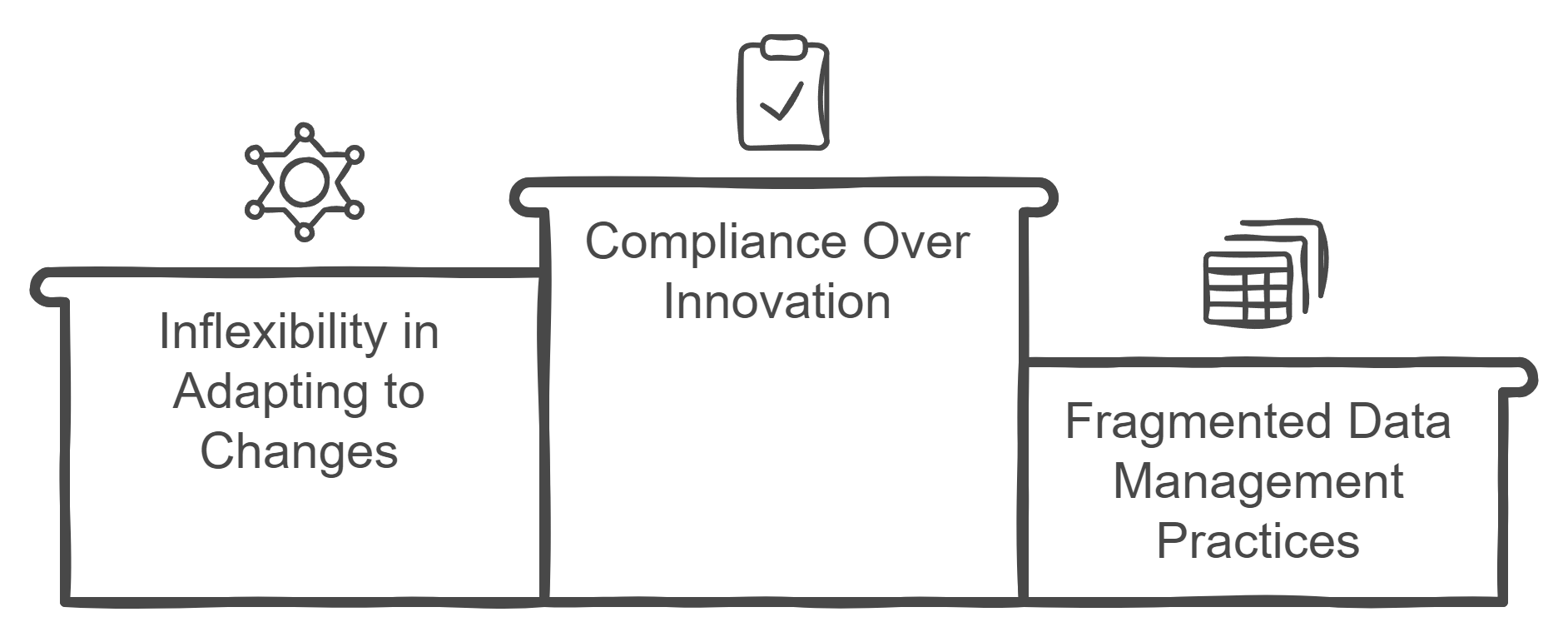
Adaptive Governance: Balancing Control and Creativity
Adaptive governance allows you to strike a balance between maintaining control over your data and fostering creativity. This approach ensures that your organization can innovate without compromising data integrity or security. By adopting adaptive governance, you create a flexible framework that evolves with your business needs and technological advancements.
For instance, organizations often face challenges when trying to balance privacy regulations with the need for innovation. Adaptive governance addresses this by enabling you to implement policies that protect sensitive information while still allowing teams to experiment and innovate. According to the Collibra Blog, governments and organizations worldwide are already formulating governance frameworks that account for legal complexities, ensuring responsible innovation.
To implement adaptive governance, focus on creating clear guidelines that encourage experimentation within controlled environments. Regularly review and update these guidelines to align with emerging trends and technologies. This proactive approach helps you stay ahead in a competitive landscape while maintaining trust in your data practices.
Automated Governance: Leveraging AI and Machine Learning
Automated governance leverages AI and machine learning to streamline data management processes. These technologies enhance accuracy, reduce manual effort, and ensure compliance with minimal intervention. By automating repetitive tasks, you free up resources to focus on strategic initiatives that drive innovation.
AI-powered tools can monitor data quality, detect anomalies, and enforce governance policies in real time. For example, the COPC Blog highlights how AI adds value to your data strategy by automating processes and improving accuracy. This eliminates the need to choose between compliance and growth, as automated governance delivers both.
To adopt automated governance, invest in scalable technologies that integrate seamlessly with your existing systems. Train your teams to use these tools effectively, ensuring they understand how automation supports your governance objectives. With the right tools and training, you can enhance efficiency and foster a culture of innovation.
Active Governance: Integrating Governance into Daily Operations
Active governance involves embedding governance practices into your organization's daily operations. This approach ensures that governance becomes a natural part of your workflows rather than an afterthought. By integrating governance into everyday activities, you create a culture where data is consistently managed and trusted.
The Astera Blog emphasizes the importance of integrated governance practices for informed decision-making and innovation. Active governance achieves this by promoting collaboration across departments and ensuring that everyone adheres to the same standards. This unified approach minimizes errors and maximizes the value of your data.
To implement active governance, start by engaging stakeholders at all levels of your organization. Provide training and resources to help employees understand their roles in maintaining data quality and security. Use technology to automate routine tasks, allowing teams to focus on strategic goals. By making governance an integral part of your operations, you empower your organization to innovate with confidence.
How Data Governance Enables Innovation in Data Science
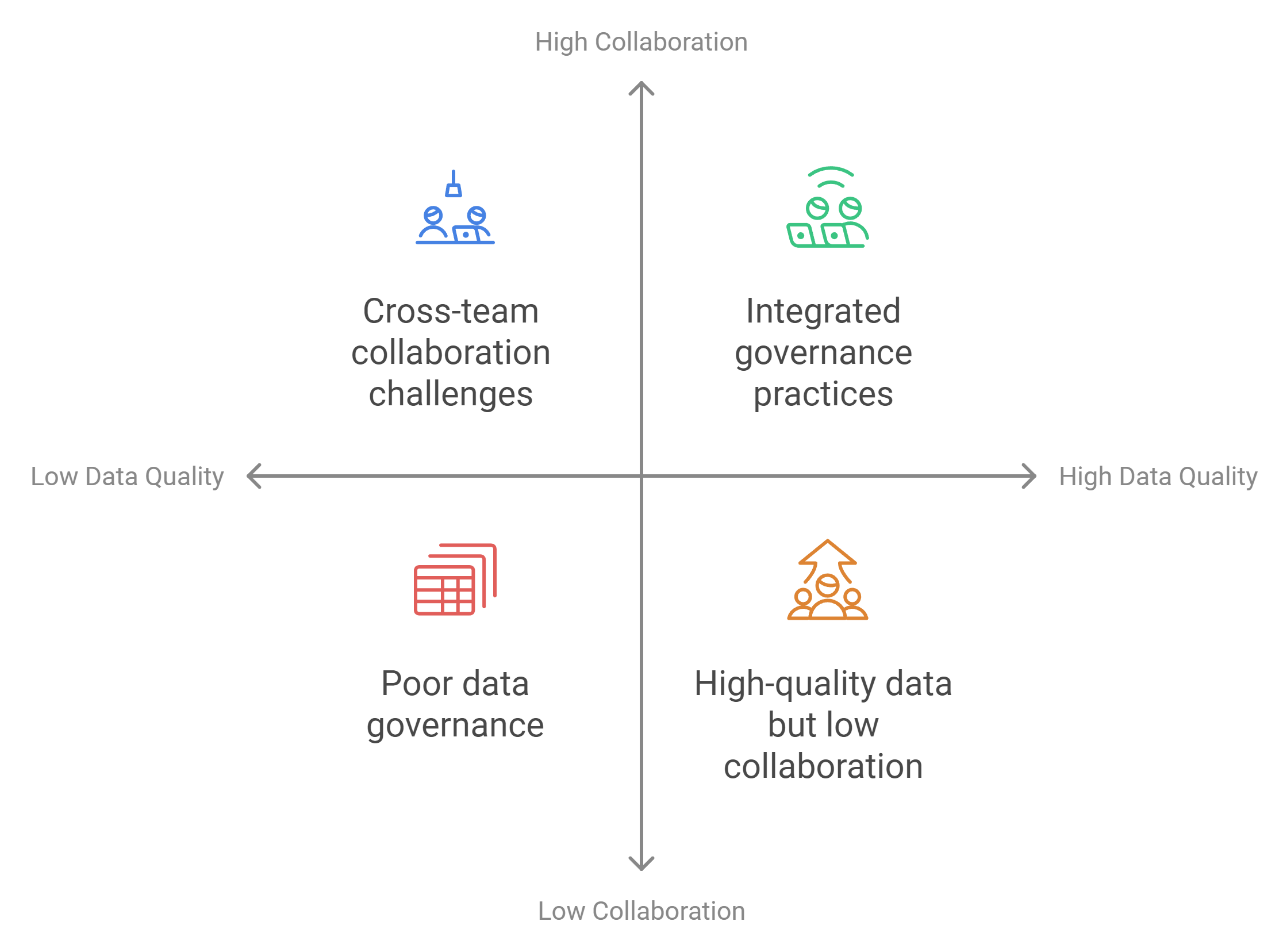
Ensuring High-Quality and Consistent Data
High-quality and consistent data forms the backbone of innovation. When your data is accurate and reliable, you can make decisions with confidence. Data governance ensures that your data meets these standards by implementing clear rules for data collection, storage, and usage. This consistency eliminates errors and reduces inefficiencies, allowing you to focus on generating insights.
Organizations with strong data governance practices outperform competitors by 400%. They achieve this by embedding protocols that maintain data quality across all operations. For example, businesses that prioritize governance can avoid costly mistakes caused by inaccurate data. This reliability empowers you to explore new opportunities and develop innovative solutions.
To ensure high-quality data, start by defining clear data standards. Regularly monitor your data for errors and inconsistencies. Use automated tools to streamline this process and maintain accuracy. By doing so, you create a solid foundation for innovation in your data science initiatives.
Facilitating Cross-Team Collaboration
Collaboration thrives when everyone works with the same reliable data. Data governance fosters this environment by providing a unified framework for managing information. When your teams have access to consistent and trustworthy data, they can collaborate more effectively. This shared understanding encourages creativity and drives innovation.
Integrated governance practices break down silos within organizations. They create a single source of truth, ensuring that all departments work with the same data. This approach not only improves communication but also enhances decision-making. For instance, marketing and product development teams can align their strategies using shared insights, leading to better outcomes.
To facilitate collaboration, implement governance policies that promote data accessibility. Encourage open communication between teams and provide training on data usage. Invest in technologies that enable seamless data sharing across departments. These steps will help you build a collaborative culture that supports innovation.
Building Trust in Data for Informed Decision-Making
Trust in data is essential for making informed decisions. Without it, you may hesitate to act on insights, slowing down progress. Data governance builds this trust by ensuring that your data is accurate, secure, and transparent. When you trust your data, you can confidently pursue innovative ideas and strategies.
Successful businesses recognize the value of adaptive governance in promoting data trust. They use governance frameworks to protect sensitive information while maintaining accessibility. This balance allows you to innovate responsibly without compromising security. For example, companies that integrate governance into daily operations can respond quickly to market changes, staying ahead of competitors.
To build trust in your data, focus on transparency. Clearly communicate your governance policies and make them accessible to all stakeholders. Regularly audit your data to ensure compliance with these policies. By prioritizing trust, you create an environment where innovation can flourish.
Benefits of Aligning Data Governance with Innovation Goals
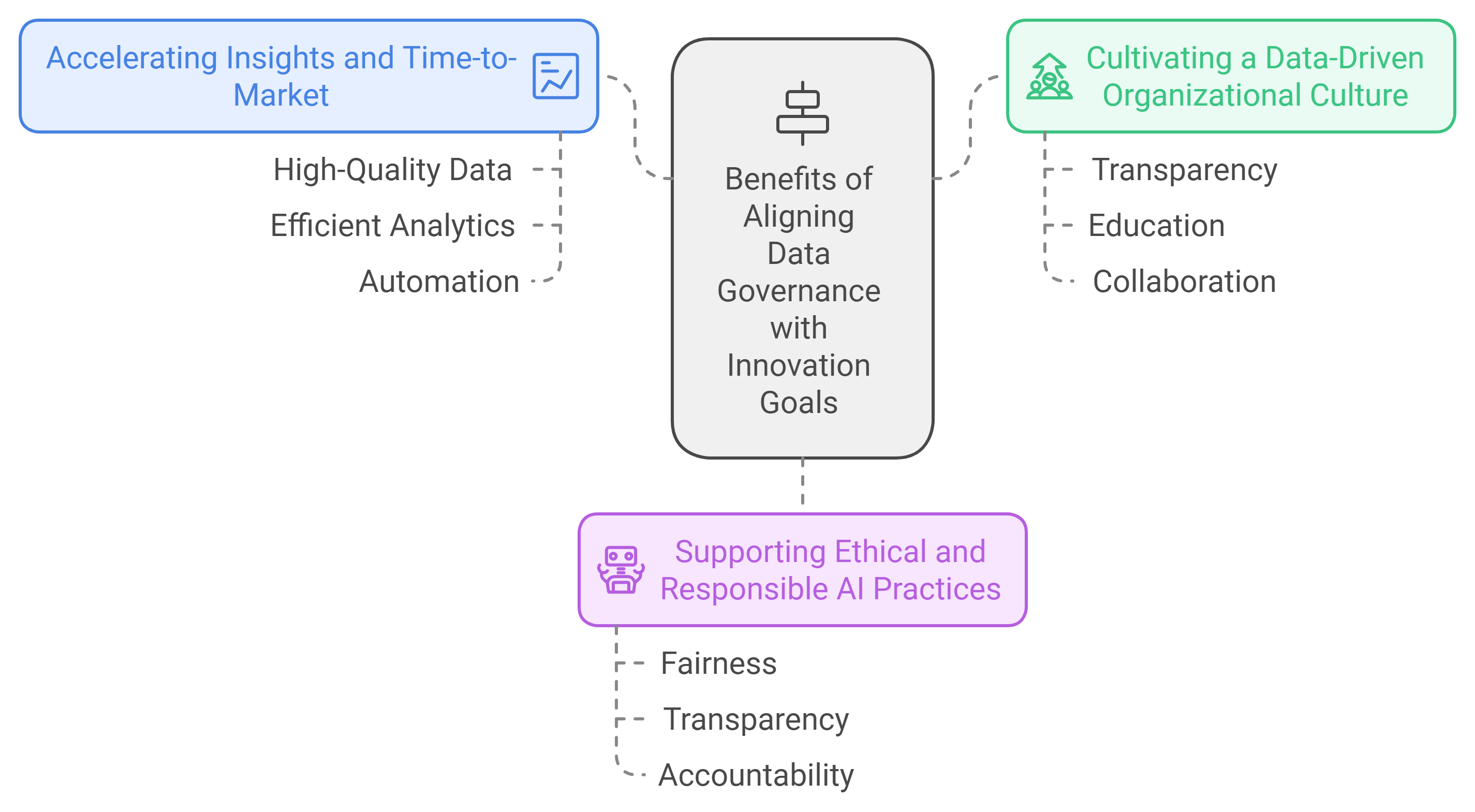
Accelerating Insights and Time-to-Market
Aligning data governance with innovation goals helps you accelerate insights and reduce time-to-market for new products or services. High-quality, well-governed data ensures that your analytics processes run smoothly, enabling faster decision-making. When your data is consistent and accessible, you can identify trends, test hypotheses, and implement solutions more efficiently.
For example, organizations that integrate governance into their workflows often experience fewer delays caused by data inconsistencies. A unified governance framework eliminates the need to clean or validate data repeatedly, allowing your teams to focus on generating actionable insights. This streamlined process shortens the time it takes to move from idea to execution.
To achieve this, prioritize automation in your governance practices. AI-powered tools can monitor data quality and enforce policies in real time, reducing manual effort. According to a survey on AI governance challenges, automated systems ensure data reliability and integrity, which are essential for driving innovation. By leveraging these technologies, you can maintain a competitive edge and bring your ideas to market faster.
Cultivating a Data-Driven Organizational Culture
A strong alignment between data governance and innovation fosters a data-driven culture within your organization. When governance ensures that data is accurate, secure, and accessible, employees across all levels feel empowered to use it confidently. This trust in data encourages collaboration and creativity, driving innovation.
Organizations that embrace a data-driven culture often see improved decision-making and operational efficiency. For instance, when teams have access to reliable data, they can collaborate effectively to solve problems and develop new strategies. This shared reliance on governed data creates a sense of accountability and ownership, further strengthening your organizational culture.
To cultivate this culture, focus on transparency and education. Clearly communicate your governance policies and provide training to help employees understand their roles in maintaining data quality. Encourage open discussions about how data can drive innovation. By embedding governance into your organizational values, you create an environment where data becomes a catalyst for growth.
Supporting Ethical and Responsible AI Practices
Data governance plays a critical role in supporting ethical and responsible AI practices. AI systems rely on high-quality data to function effectively. Without governance, these systems risk producing biased or inaccurate results, which can lead to reputational damage and legal challenges. Ensuring that your data meets ethical standards protects your organization and builds trust with stakeholders.
A survey on responsible AI use highlights the importance of governance in avoiding unethical practices. Organizations that prioritize governance ensure their AI models align with legal and ethical standards. This alignment not only enhances the accuracy of AI systems but also demonstrates your commitment to responsible innovation.
To support ethical AI, implement governance frameworks that emphasize fairness, transparency, and accountability. Regularly audit your data to identify and address potential biases. Engage diverse stakeholders in the governance process to ensure that your policies reflect a wide range of perspectives. By taking these steps, you can harness the power of AI responsibly and drive innovation with confidence.
How to Implement Effective Data Governance Frameworks
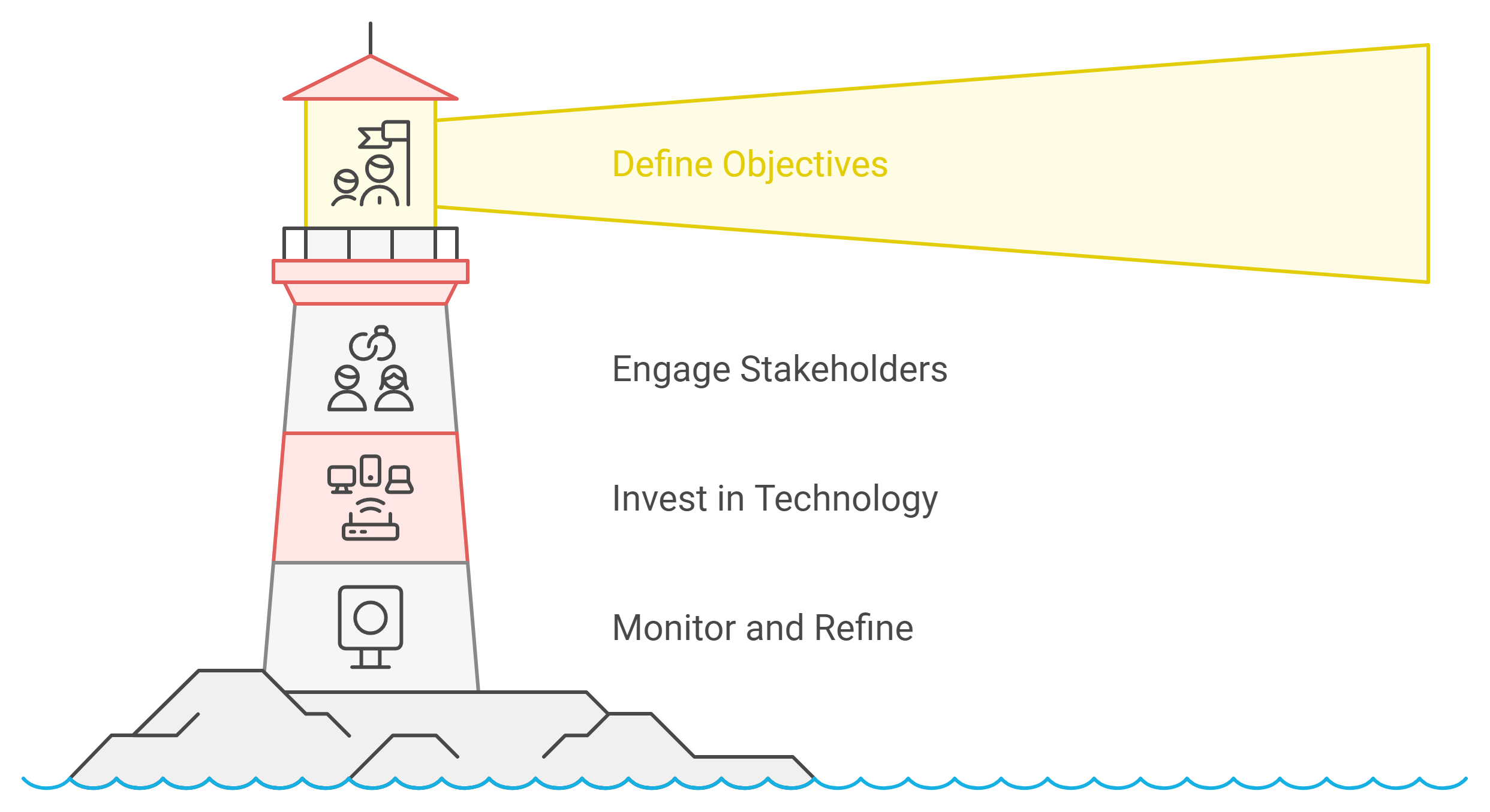
Define Clear Objectives and Success Metrics
Establishing clear objectives is the first step in creating an effective data governance framework. You need to identify what you aim to achieve with your governance efforts. Whether it’s improving data quality, ensuring compliance, or driving innovation, having well-defined goals provides direction and focus.
To measure progress, set success metrics that align with your objectives. For example, if your goal is to enhance data quality, track metrics like error rates, data completeness, or consistency levels. These measurable indicators help you evaluate the effectiveness of your governance practices and make necessary adjustments.
“Goal-setting is essential for establishing measurable goals and metrics in a data governance framework.”
By defining objectives and metrics, you create a roadmap for your governance strategy. This clarity ensures that your efforts remain aligned with organizational priorities and deliver tangible results.
Engage Stakeholders Across All Levels
Data governance is not a one-person job. It requires collaboration across all levels of your organization. Engaging stakeholders ensures that everyone understands their role in maintaining data quality and security. This collective effort fosters accountability and builds a culture of trust.
Start by identifying key stakeholders, including executives, data stewards, IT teams, and end-users. Involve them in the governance process by seeking their input and addressing their concerns. When stakeholders feel included, they are more likely to support and adhere to governance policies.
Integrated governance practices provide a comprehensive framework for managing data and information assets, supporting informed decision-making and driving innovation.
Regular communication is crucial for stakeholder engagement. Use meetings, workshops, or training sessions to keep everyone informed about governance updates and best practices. By fostering collaboration, you ensure that your governance framework is both effective and widely accepted.
Invest in Scalable and Flexible Technologies
The volume and complexity of data continue to grow, making scalable and flexible technologies essential for effective governance. These tools help you manage large datasets, enforce policies, and adapt to changing business needs. Without the right technology, maintaining data quality and security becomes increasingly challenging.
Scalable technologies allow your governance framework to grow with your organization. For instance, cloud-based platforms provide the flexibility to handle expanding data volumes without compromising performance. Automated tools, powered by AI and machine learning, streamline processes like data monitoring and policy enforcement.
“Scalable governance frameworks are essential for managing the volume and complexity of today’s data ecosystems.”
When choosing technologies, prioritize solutions that integrate seamlessly with your existing systems. This compatibility ensures a smooth transition and minimizes disruptions. Additionally, invest in tools that offer real-time insights and analytics. These features enable you to identify issues quickly and make informed decisions.
By leveraging scalable and flexible technologies, you create a robust governance framework that supports your organization’s growth and innovation.
Continuously Monitor and Refine Governance Practices
Effective data governance requires ongoing attention. You cannot set up a framework and expect it to remain effective without regular evaluation. Monitoring and refining your governance practices ensure they stay aligned with your organization’s evolving needs and the ever-changing data landscape.
Start by establishing a system for continuous monitoring. Use automated tools to track data quality, compliance, and usage patterns in real time. These tools help you identify inconsistencies, errors, or potential security risks before they escalate. For example, AI-powered solutions can detect anomalies in your data, ensuring that your governance framework remains robust and reliable.
“Governance builds trust, optimizes decision-making, and opens new opportunities by establishing precise protocols for data collection, access, and usage.”
Regular audits are essential for maintaining the integrity of your governance practices. Schedule periodic reviews to assess whether your policies and procedures are still effective. During these audits, evaluate key metrics such as data accuracy, accessibility, and adherence to compliance standards. This process helps you pinpoint areas for improvement and ensures that your governance framework evolves with your business goals.
Refinement is just as important as monitoring. As your organization grows, your data governance framework must adapt to handle increased complexity and volume. Scalable governance frameworks are crucial for managing today’s data ecosystems. Invest in technologies that can grow with your organization, ensuring that your governance practices remain effective over time.
Engage stakeholders in the refinement process. Gather feedback from data stewards, IT teams, and end-users to understand their challenges and needs. This collaborative approach ensures that your governance framework addresses real-world issues and gains widespread support across your organization.
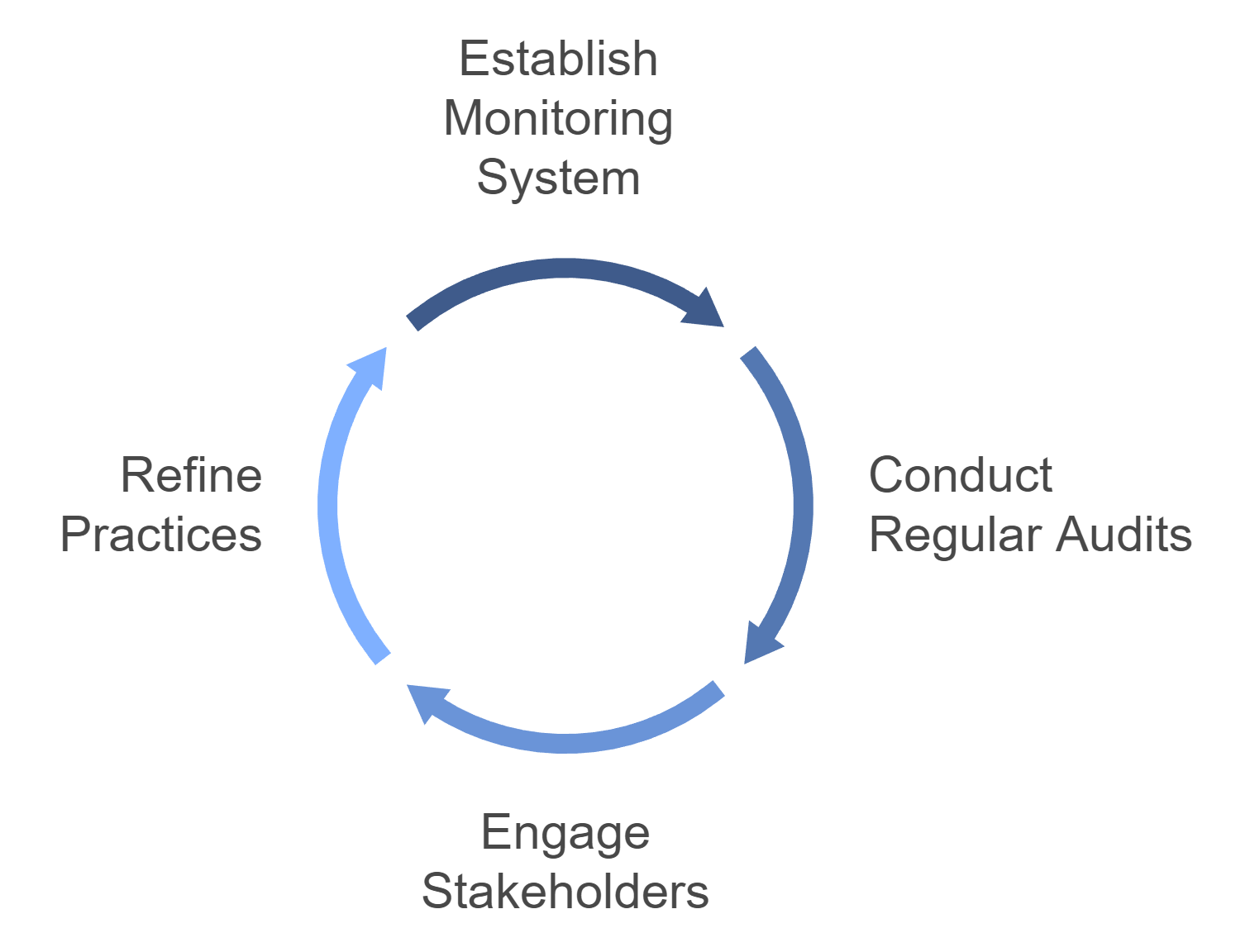
To refine your practices effectively, focus on these key steps:
Set Clear Objectives: Define what you aim to achieve with your governance updates. Whether it’s improving data security or enhancing accessibility, clear goals provide direction.
Leverage Analytics: Use data analytics to measure the impact of your governance practices. Analyze trends and patterns to identify what works and what needs adjustment.
Update Policies: Revise outdated policies to reflect new regulations, technologies, or organizational priorities. Ensure that your governance framework stays relevant and compliant.
Train Your Teams: Provide ongoing training to keep employees informed about updated governance practices. Educated teams are more likely to adhere to policies and contribute to their success.
By continuously monitoring and refining your governance practices, you create a dynamic framework that supports innovation while maintaining control. This proactive approach not only enhances decision-making but also builds trust in your data, empowering your organization to thrive in a competitive, data-driven world.
Best Practices for Driving Innovation Through Data Governance
Prioritize Data Accessibility While Ensuring Security
Data accessibility plays a pivotal role in fostering innovation. When your teams can access the right data at the right time, they can make informed decisions and explore creative solutions. However, accessibility must not compromise security. Striking this balance ensures that your data remains both usable and protected.
To achieve this, start by implementing role-based access controls. Assign permissions based on job responsibilities to ensure that employees access only the data they need. This approach minimizes risks while maintaining usability. For example, marketing teams may require access to customer insights, while finance teams focus on transactional data.
Use encryption to safeguard sensitive information. Encrypt data both at rest and in transit to protect it from unauthorized access. Regularly update your security protocols to address emerging threats. According to data governance professionals, demonstrating the value of secure yet accessible data can help address concerns from business leaders who may resist governance initiatives.
“Data governance professionals emphasize that balancing accessibility with security builds trust and encourages innovation across teams.”
Encourage transparency in your governance policies. Clearly communicate how data is accessed and protected. This openness fosters confidence among employees, enabling them to use data responsibly and creatively.
Encourage Experimentation with Controlled Environments
Innovation thrives in environments that allow experimentation. Controlled environments provide a safe space for teams to test ideas without risking data integrity or security. By fostering experimentation, you empower your organization to explore new possibilities and drive growth.
Create sandboxes for testing. These isolated environments let teams work with real data while preventing changes from affecting live systems. For instance, data scientists can use sandbox environments to train machine learning models without compromising operational data.
Establish clear guidelines for experimentation. Define what can and cannot be done within these controlled settings. This structure ensures that creativity aligns with organizational goals. Regularly review and refine these guidelines to adapt to evolving needs.
“Controlled environments not only encourage innovation but also demonstrate the practical value of data governance,” say data governance experts.
Provide resources and tools for experimentation. Equip your teams with the software, datasets, and training they need to succeed. When employees feel supported, they are more likely to embrace innovative practices.
Align Governance Policies with Strategic Business Goals
Aligning governance policies with your organization’s strategic goals ensures that data governance drives meaningful outcomes. When governance supports your broader objectives, it becomes a catalyst for innovation rather than a barrier.
Start by identifying your organization’s key priorities. Whether it’s improving customer experience, increasing operational efficiency, or launching new products, your governance framework should reflect these goals. For example, if customer satisfaction is a priority, focus on maintaining high-quality customer data.
Engage stakeholders in the alignment process. Collaborate with business leaders, data stewards, and IT teams to ensure that governance policies address their needs. This inclusive approach fosters buy-in and ensures that governance initiatives gain widespread support.
“Addressing concerns of business unit leaders resistant to data governance requires demonstrating its alignment with their objectives,” note data governance professionals.
Regularly evaluate the impact of your governance policies. Use metrics to measure how well they support your strategic goals. Adjust your framework as needed to stay aligned with changing priorities. This continuous improvement ensures that governance remains relevant and effective.
By prioritizing accessibility, fostering experimentation, and aligning policies with business goals, you create a governance framework that drives innovation. These best practices empower your organization to unlock the full potential of its data, paving the way for sustained growth and success.
Data governance empowers you to unlock the full potential of your data. It ensures high-quality, trustworthy, and accessible information, forming the foundation for innovation in data science. By adopting modern strategies like adaptive and automated governance, you align data practices with organizational goals. This alignment accelerates insights, fosters collaboration, and builds trust.
“Data is one of the most powerful resources available to businesses.”
Prioritizing governance as a driver of innovation positions your organization to thrive in a competitive, data-driven world. Embrace governance not as a constraint but as a catalyst for sustainable growth and responsible innovation.
See Also
Understanding Data Governance: Key Principles And Practices
How Data Governance Impacts Data Quality Assurance
A Comprehensive Guide To Developing Data Governance Strategies
Eight Common Data Governance Challenges And Their Remedies
Essential Elements of Data Governance Featuring George Firican
